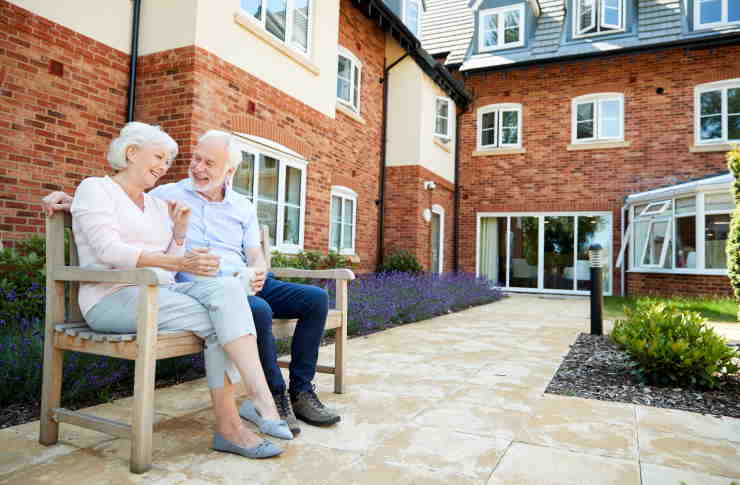Senior Apartments: Essential Guide to Housing Options
As the population ages, demand for age-appropriate housing grows. This guide explains senior apartments—what they offer, how they differ from assisted living or nursing homes, cost considerations, and tips for choosing the right community. Learn about amenities, accessibility, and financial factors to help make an informed decision about senior housing.

What amenities and design features are common in senior apartments?
Senior apartment communities are intentionally planned to support safety, comfort, and social engagement for older adults. Typical features you’ll find include wide doorways and hallways for mobility devices, grab bars and non-slip surfaces in bathrooms, lever handles on doors and faucets, and single-level floorplans or elevators in multi-story buildings. Many complexes install emergency response systems or monitored call buttons to provide peace of mind.
Common shared amenities often focus on convenience and community life: lounges and activity rooms, libraries or media areas, fitness spaces equipped for low-impact exercise, on-site laundry, and well-maintained outdoor spaces such as gardens, benches, and walking paths. Some communities also arrange group activities, transportation to medical appointments or shopping, and light maintenance services so residents can enjoy a low-maintenance lifestyle.
How senior apartments compare to other senior housing types
Senior apartments fit within a spectrum of senior housing options and are best suited to older adults who want independence with community support. Here’s how they differ from other choices:
- Independent living communities: These often resemble senior apartments but usually provide more bundled services such as meals, housekeeping, and scheduled activities.
- Assisted living facilities: Geared toward people who need help with daily tasks—bathing, dressing, medication reminders—assisted living offers more hands-on care than typical senior apartments.
- Nursing homes: Designed for residents with significant medical needs, nursing homes provide 24/7 medical and personal care.
- Continuing care retirement communities (CCRCs): CCRCs house multiple levels of care (independent, assisted, and skilled nursing) on one campus, allowing residents to transition as needs change.
Senior apartments occupy a middle ground: they emphasize autonomy while providing social opportunities and age-friendly features. They are especially suitable for active seniors who don’t require regular medical assistance but value being part of an age-restricted community.
Financial considerations to keep in mind
Costs for senior apartments vary by region, building age, services offered, and unit size. Key financial elements include:
- Rent: Most senior apartments are leased on a monthly basis. Rent typically covers the living unit and may include some services.
- Utilities: Some communities bundle utilities in rent; others charge separately for electricity, water, or internet.
- Additional fees: Expect potential charges for parking, storage, extra services, or community activities.
- Income-restricted units: Certain complexes are designated as affordable senior housing and require that residents meet income eligibility guidelines.
It’s important to review lease agreements closely to understand what is and isn’t included. Ask about rent increases, move-in fees, security deposits, and policies for terminating a lease.
| Type of Senior Housing | Typical Monthly Cost | Common Amenities Included |
|---|---|---|
| Senior Apartments | $1,500 - $3,500 | Basic utilities, on-site maintenance, social events |
| Independent Living | $2,500 - $4,500 | Meals, housekeeping, activity programs, social spaces |
| Assisted Living | $3,500 - $6,500 | Personal care, medication management, meals, 24/7 staff |
Prices and cost estimates are general and can change. Always conduct up-to-date research before making financial decisions.
How to find and decide on the right senior apartment
Choosing a senior apartment is more than picking a floor plan; it’s selecting a lifestyle and support network. Consider these steps:
- Location: Evaluate closeness to family, friends, healthcare providers, pharmacies, and public transportation. Proximity can significantly affect everyday convenience.
- Budget and long-term planning: Match monthly costs and potential increases with retirement income and savings. Factor in unexpected health-related expenses.
- Visit multiple communities: In-person tours reveal community energy, cleanliness, and how staff and residents interact. Attend an activity or speak with residents to gauge fit.
- Services and rules: Review what services are included, optional add-ons, pet policies, guest rules, and any age restrictions or accessibility accommodations.
- Future needs: Consider whether the community can accommodate increased mobility challenges or health needs, or if it partners with nearby assisted living or medical providers.
- Seek guidance: Talk with family members, financial advisors, or senior housing counselors to weigh options.
Benefits and potential downsides of senior apartments
Advantages: - Social connections with peers and organized activities that reduce isolation. - Maintenance-free living—exterior upkeep and many repairs are handled by the property. - Safety features and emergency systems designed for older residents. - Often more affordable than maintaining a single-family home, particularly when downsizing.
Potential drawbacks: - Smaller living spaces and less room for large belongings or frequent family stays. - Rules that limit certain customizations to the unit. - Limited on-site medical care; residents with escalating health needs may need assisted living or nursing care. - Reduced privacy compared with a private home, depending on building layout and community design.
Final considerations
Senior apartments are a practical choice for many older adults who want independence combined with community supports. By carefully evaluating amenities, comparing costs, visiting properties, and thinking ahead to future needs, seniors and their families can find a residence that supports safety, social life, and everyday convenience. Doing homework—reading leases, asking detailed questions about services and fees, and getting feedback from current residents—will help ensure the chosen apartment enhances quality of life during retirement years.






